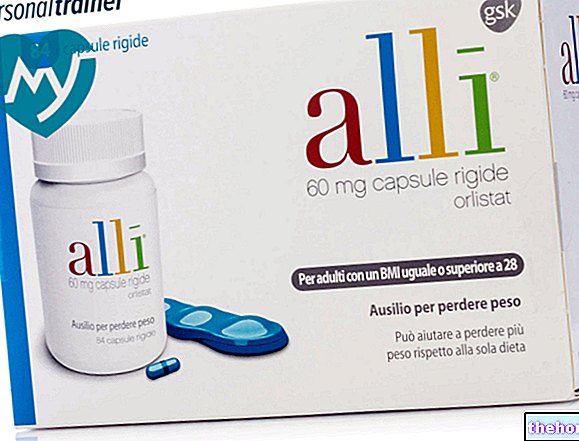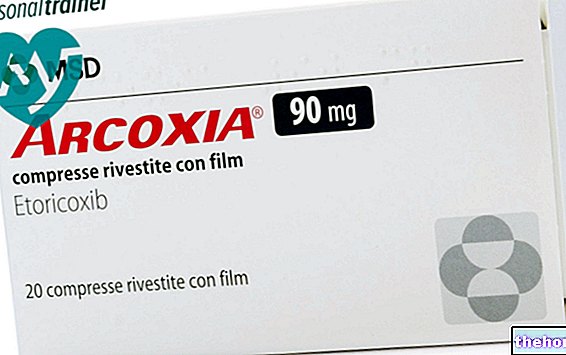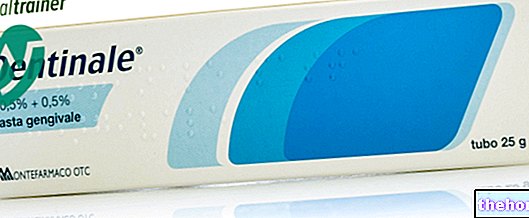Active ingredients: Cinnarizine, Dimenhydrinate
ARLEVERTAN 20 mg / 40 mg tablets
Why is Arlevertan used? What is it for?
Arlevertan contains two active substances, cinnarizine and dimenhydrinate. The two substances belong to different groups of medicines. Cinnarizine belongs to the so-called calcium channel blockers, while dimenhydrinate belongs to the so-called antihistamines.
Both substances work by reducing the symptoms of dizziness (a feeling of dizziness or spinning) and nausea (malaise). When these two substances are used in combination, they are more effective than the single application of each of them.
Arlevertan is used to treat various types of vertigo in adults. Vertigo can have a number of different causes. The use of Arlevertan can help you perform daily activities made difficult by the presence of dizziness.
Contraindications When Arlevertan should not be used
Do not take Arlevertan:
- if you are under the age of 18
- if you are allergic to cinnarizine, dimenhydrinate or diphenhydramine or any of the other ingredients of this medicine
- if you are allergic to any other antihistamines (such as astemizole, chlorpheniramine and terfenadine, used as anti-allergic medicines). You should not take this medicine unless your doctor tells you to.
- if you have angle closure glaucoma (a special type of vision disorder)
- if you have epilepsy
- if you have increased pressure in the brain (eg due to a tumor)
- if you have alcohol abuse problems
- if you have prostate problems which make it difficult for you to urinate
- if you have liver or kidney failure.
Precautions for use What you need to know before taking Arlevertan
Talk to your doctor or pharmacist before taking Arlevertan if you suffer from:
- hypo or hypertension
- elevated eye pressure
- bowel obstruction
- enlarged prostate
- overactive thyroid
- severe heart disease
- Parkinson's disease.
The use of Arlevertan may worsen these conditions. Although Arlevertan may still be indicated for you, your doctor should keep these factors in mind.
Interactions Which drugs or foods can modify the effect of Arlevertan
Tell your doctor or pharmacist if you are taking, have recently taken or might take any other medicines.
Arlevertan may interact with other medicines you are taking.
When taken with the medicines listed below, Arlevertan may make you tired or drowsy:
- barbiturates (medicines often taken to induce a calm state)
- narcotic pain relievers such as morphine (strong pain relievers such as morphine)
- tranquilizers (a type of medicine used to treat depression and anxiety)
- monoamine oxidase inhibitors (used to treat depression and anxiety).
Arlevertan can potentiate the effects of the following medicines:
- tricyclic antidepressants (used to treat depression and anxiety)
- atropine (a medicine that relaxes muscles and is often used in eye tests)
- ephedrine (can be used to treat cough or stuffy nose)
- procarbazine (a medicine used to treat some types of cancer)
- medicines used to lower blood pressure
Aminoglycosides (a type of antibiotic) can damage the inner ear. If you take Arlevertan, you may not notice the damage.
You should not take Arlevertan with medicines used to correct heart beat problems (antiarrhythmics).
Arlevertan can also alter the skin's response to allergy tests.
Arlevertan with food, drink and alcohol
Arlevertan can cause indigestion, which can be reduced by taking the tablets after meals. Do not drink alcohol while taking Arlevertan as it may make you tired or sleepy.
Warnings It is important to know that:
Pregnancy, breastfeeding and fertility
If you are pregnant or breast-feeding, think you may be pregnant or are planning to have a baby, ask your doctor or pharmacist for advice before taking this medicine.
Driving and using machines
Arlevertan can cause drowsiness. In this case, you should not drive or operate machinery.
Dose, Method and Time of Administration How to use Arlevertan: Posology
Always take Arlevertan exactly as your doctor or pharmacist has told you.
If in doubt, consult your doctor or pharmacist. The recommended dose is 1 tablet three times a day, to be taken after meals with some liquid. The tablet should be swallowed whole without being chewed.
Arlevertan is usually taken for up to 4 weeks. Your doctor will advise you if you need to take Arlevertan longer.
Overdose What to do if you have taken too much Arlevertan
Seek urgent medical attention if you have accidentally taken too many tablets or if a child has swallowed any.
Taking too much Arlevertan can cause severe tiredness, drowsiness and instability. The pupils may dilate and you may not be able to urinate. You may experience dry mouth, flushing of the face, rapid heart rate, fever, sweating and headache.
If you take a large dose of Arlevertan you may develop seizures, hallucinations, high blood pressure, feel shaken, excited and have difficulty breathing. He can go into a coma.
If you forget to take Arlevertan
If you forget to take a Arlevertan tablet, you should skip that dose. Take the next Arlevertan tablet at the usual time. Do not take a double dose to make up for a forgotten tablet.
If you stop taking Arlevertan
Do not stop taking Arlevertan before your doctor tells you to. If you stop too early, the symptoms of dizziness (feeling of dizziness and spinning) are likely to return.
If you have any further questions on the use of this medicine, ask your doctor or pharmacist.
Side Effects What are the side effects of Arlevertan
Like all medicines, this medicine can cause side effects, although not everybody gets them.
Common side effects (affecting up to 1 in 10 people): numbness, dry mouth, headache and stomach pains. These are usually mild in severity and disappear over a few days while treatment with Arlevertan is continued.
Uncommon side effects (affecting up to 1 in 100 people): sweating, red skin, indigestion, nausea (malaise), diarrhea, nervousness, cramps, forgetfulness, tinnitus (ringing in the ears), paraesthesia (tingling of hands and / or feet ), tremor.
Rare side effects (affects up to 1 in 1000 people): visual impairment, allergic reactions (e.g. skin reactions), sensitivity to light and difficulty in urinating.
Very rare side effects (affects less than 1 in 10,000 people): reduction in white blood cell and platelet counts and a noticeable reduction in red blood cell count, which can cause weakness, bruising or increase the chance of developing infections. If you suffer from infections with fever and severe worsening of your general health, contact your doctor and tell him about the medicines you are taking.
Other possible reactions (frequency cannot be estimated from the available data) that may occur with this type of medicine include:
weight gain, constipation, chest tightness, jaundice (yellowing of the skin or sclera of the eyes due to blood or liver problems), worsening of angle closure glaucoma (an eye disease with increased pressure in the eye), uncontrollable movements , unusual excitement and restlessness (particularly in children) and severe skin reactions.
Reporting of side effects
If you get any side effects, talk to your doctor or pharmacist. This includes any possible side effects not listed in this leaflet. You can also report side effects directly via the national reporting system at https://www.aifa.gov.it/content/segnalazioni-reazioni-avverse
By reporting side effects you can help provide more information on the safety of this medicine.
Expiry and Retention
Keep this medicine out of the sight and reach of children.
Do not use this medicine after the expiry date which is stated on the blister and carton after EXP. The expiry date refers to the last day of that month.
This medicine does not require any special storage conditions.
Do not throw any medicines via wastewater or household waste. Ask your pharmacist how to throw away medicines you no longer use. This will help protect the environment.
What Arlevertan contains
The active ingredients are: cinnarizine 20 mg and dimenhydrinate 40 mg.
The other ingredients are: microcrystalline cellulose, maize starch, talc, hypromellose, colloidal anhydrous silica, magnesium stearate and croscarmellose sodium.
What Arlevertan looks like and contents of the pack
Arlevertan tablets are round, white in color and marked with an "A". They are available in packs of 20, 50 or 100 tablets.
Not all pack sizes may be marketed.
Source Package Leaflet: AIFA (Italian Medicines Agency). Content published in January 2016. The information present may not be up-to-date.
To have access to the most up-to-date version, it is advisable to access the AIFA (Italian Medicines Agency) website. Disclaimer and useful information.
01.0 NAME OF THE MEDICINAL PRODUCT
ARLEVERTAN 20 MG / 40 MG TABLETS
02.0 QUALITATIVE AND QUANTITATIVE COMPOSITION
One tablet contains 20 mg of cinnarizine and 40 mg of dimenhydrinate.
For the full list of excipients, see section 6.1.
03.0 PHARMACEUTICAL FORM
Tablet.
White, round, biconvex shaped tablets with an embossed "A" on one side, 8.1 mm in diameter.
04.0 CLINICAL INFORMATION
04.1 Therapeutic indications
Treatment of vertiginous symptoms of various origins.
Arlevertan is indicated in adults.
04.2 Posology and method of administration
Dosage
Adults:
1 tablet three times a day.
Senior citizens:
Dosage as for adults.
Kidney failure:
Arlevertan should be used with caution in patients with mild or moderate renal impairment. Patients with a creatinine clearance
Hepatic insufficiency:
No studies are available in patients with hepatic insufficiency. Patients with severe hepatic impairment should not use Arlevertan.
Pediatric population:
The safety and efficacy of Arlevertan in children and adolescents below 18 years of age have not been established. No data are available.
In general, the duration of treatment should not exceed four weeks. It is up to the doctor to decide whether more prolonged treatment is needed.
Method of administration
Arlevertan tablets should be taken after meals, without chewing, with a little liquid.
04.3 Contraindications
Hypersensitivity to the active substances, to diphenhydramine or other antihistamines with a similar structure, or to any of the excipients listed in section 6.1.
Diphenhydramine is totally excreted via the kidney and patients with severe renal insufficiency were excluded from the clinical development program. Patients with a creatinine clearance ≤ 25 ml / min (severe renal impairment) should not use Arlevertan.
Both active components of Arlevertan are extensively metabolised by hepatic cytochrome P450 enzymes; therefore, in patients with severe hepatic insufficiency the plasma concentrations of both unchanged drugs and their half-lives increase.
This has been shown for diphenhydramine in cirrhotic patients. Consequently, patients with severe hepatic impairment should not use Arlevertan.
Arlevertan should not be given to patients with angle closure glaucoma, seizures, suspected increased intracranial pressure, alcohol abuse or urinary retention related to urethro-prostatic disorders.
04.4 Special warnings and appropriate precautions for use
Arlevertan does not significantly reduce blood pressure and yet should be used with caution in hypotensive patients.
Arlevertan should be taken after meals to minimize any gastric irritation.
Caution should be exercised when administering Arlevertan to patients with conditions that may be aggravated by anticholinergic therapy, eg. elevated intraocular pressure, pyloro-duodenal obstruction, prostatic hypertrophy, hypertension, hyperthyroidism or severe coronary artery disease.
Caution should be exercised in administering Arlevertan to patients with Parkinson's disease.
04.5 Interactions with other medicinal products and other forms of interaction
No interaction studies have been performed.
The anticholinergic and sedative effects of Arlevertan can be enhanced by monoamine oxidase inhibitors. Procarbazine can intensify the effect of Arlevertan.
Like other antihistamines, Arlevertan may potentiate the sedative effects of central nervous system (CNS) depressants, including alcohol, barbiturates, narcotic analgesics and tranquilizers.
Patients should be advised to avoid alcoholic beverages.
Arlevertan may also potentiate the effects of antihypertensives, ephedrine and anticholinergics such as atropine and tricyclic antidepressants.
Arlevertan can mask the ototoxic symptoms associated with aminoglycoside antibiotics and the skin's response to skin allergy tests.
Concomitant administration of medicinal products that prolong the QT interval of the ECG, such as class Ia and class III antiarrhythmics, should be avoided.
Information on the possible pharmacokinetic interactions of cinnarizine and diphenhydramine with other medicinal products is limited. Diphenhydramine inhibits CYP2D6 mediated metabolism; Caution is advised when combining Arlevertan with substrates of this enzyme, especially those with a narrow therapeutic range.
04.6 Pregnancy and lactation
Pregnancy
There are no data on the safety of Arlevertan in human pregnancy. Animal studies are insufficient to detect effects on pregnancy, embryonal / fetal development and postnatal development (see section 5.3). The teratogenic risk of the individual active substances, dimenhydrinate / diphenhydramine and cinnarizine is low. No teratogenic effects were observed in animal studies.
There are no data from the use of Arlevertan in pregnant women. Animal studies are insufficient to demonstrate reproductive toxicity (see section 5.3).
Based on human data it is believed that dimenhydrinate may have an oxytocic effect and shorten labor.
Arlevertan is not recommended during pregnancy.
Feeding time
Dimenhydrinate and cinnarizine are excreted in breast milk. Arlevertan should not be used while breastfeeding.
Fertility
No data available.
04.7 Effects on ability to drive and use machines
Arlevertan may have minor influence on the ability to drive and use machines.
Arlevertan may cause numbness, particularly at the start of treatment. Patients who experience numbness should not drive or operate machinery.
04.8 Undesirable effects
The most frequent adverse reactions (ADRs) seen in clinical trials are somnolence (including drowsiness, tiredness, fatigue, lightheadedness) in approximately 8% of patients and dry mouth in approximately 5% of patients. These reactions are usually mild and they disappear within a few days while continuing the treatment. The table below lists the frequency of adverse reactions to Arlevertan from clinical trials and spontaneous patient reports.
Tabular list of adverse reactions.
The following adverse reactions found in association with dimenhydrinate and cinnarizine are also reported (frequency cannot be estimated from the available data):
Dimenhydrinate: paradoxical excitement (particularly in children), worsening of angle closure glaucoma, reversible agranulocytosis.
Cinnarizine: constipation, weight gain, chest tightness, cholestatic jaundice, extrapyramidal symptoms, lupus-like skin reactions, lichen planus.
Reporting of suspected adverse reactions
Reporting of suspected adverse reactions occurring after authorization of the medicinal product is important as it allows continuous monitoring of the benefit / risk balance of the medicinal product. Healthcare professionals are asked to report any suspected adverse reactions via the national reporting system. "address https://www.aifa.gov.it/content/segnalazioni-reazioni-avverse
04.9 Overdose
Symptoms of Arlevertan overdose include numbness, dizziness and ataxia with anticholinergic effects such as dry mouth, flushing of the face, dilated pupils, tachycardia, pyrexia, headache and urinary retention. Convulsions, hallucinations, excitement, respiratory depression, hypertension, tremor and coma can occur, especially in the case of massive overdose.
Management of overdose: general supportive measures should be adopted for the treatment of respiratory or circulatory insufficiency. Gastric lavage with isotonic sodium chloride solution is recommended. Body temperature should be carefully monitored as pyrexia can occur as a consequence of antihistamine intoxication, particularly in children.
Cramp-like symptoms can be controlled through careful administration of fast-acting barbiturates. In case of marked central anticholinergic effects, physostigmine (after related examination) should be administered slowly intravenously (or, if necessary, intramuscularly): 0.03 mg / kg body weight (max. 2 mg in adults and max. 0.5 mg in children).
Dimenhydrinate is dialyzable, however the treatment of overdose by this procedure is not considered satisfactory. Activated carbon hemoperfusion allows sufficient elimination of dimenhydrinate. There are no data on the dialysability of cinnarizine.
05.0 PHARMACOLOGICAL PROPERTIES
05.1 Pharmacodynamic properties
Pharmacotherapeutic group: antivertigo preparations.
ATC code: N07CA52.
Dimenhydrinate, the chloroteophylline salt of diphenhydramine, is an antihistamine with anticholinergic (antimuscarinic) properties, which exerts parasympatholytic and depressant effects on the central nervous system. Dimenhydrinate has antiemetic and antivertigenic effects since it affects the trigger zone of chemoreceptors in the region of the IV ventricle, thus acting predominantly on the central vestibular system.
Due to its calcium antagonist properties, cinnarizine mainly exerts a sedative action on the vestibular system by inhibiting the influx of calcium into the vestibular sensory cells, and therefore acts predominantly on the peripheral vestibular system.
The efficacy of cinnarizine and dimenhydrinate in the treatment of vertigo is known. In the population studied, the combination product is more effective than the individual components.
The product has not been studied in motion sickness.
05.2 Pharmacokinetic properties
Absorption and distribution :
After oral administration, dimenhydrinate rapidly releases its diphenhydramine component. Diphenhydramine and cinnarizine are rapidly absorbed from the gastrointestinal tract. In humans, the maximum plasma concentrations (Cmax) of the two substances are reached in 2 - 4 hours, while the plasma elimination half-life of both is between 4 and 5 hours, both after the administration of a single substance and the product of Association.
Biotransformation :
Cinnarizine and diphenhydramine are extensively metabolised in the liver. The metabolism of cinnarizine involves ring hydroxylation reactions partly catalyzed by CYP2D6 and N-dealkylation reactions by low specificity CYP enzymes. The major pathway of diphenhydramine metabolism is the sequential N-demethylation of tertiary amine. In vitro studies in human liver microsomes indicate the involvement of several CYP enzymes, including CYP2D6.
Elimination :
Cinnarizine is eliminated mainly in the faeces (40-60%) and to a lesser extent also in the urine, mainly in the form of metabolites conjugated with glucuronic acid. The main route of elimination of diphenhydramine is in the urine, mainly in the form of metabolites , with a predominance (40-60%) of the deaminated compound, the diphenylmethoxyacetic acid.
05.3 Preclinical safety data
Non-clinical data reveal no special hazard for humans based on conventional studies of repeated dose toxicity with the combination of cinnarizine and dimenhydrinate, fertility with cinnarizine or dimenhydrinate and embryonic / fetal development with dimenhydrinate. and on teratogenicity with cinnarizine. In a study in rats, cinnarizine resulted in a reduction in litter size, an increase in the number of resorbed fetuses and a reduction in the birth weight of the pups.
The genotoxic and carcinogenic potential of the cinnarizine / dimenhydrinate combination has not been fully evaluated.
06.0 PHARMACEUTICAL INFORMATION
06.1 Excipients
Microcrystalline cellulose,
cornstarch,
talc,
hypromellose,
colloidal anhydrous silica,
magnesium stearate,
croscarmellose sodium.
06.2 Incompatibility
Not relevant.
06.3 Period of validity
3 years.
06.4 Special precautions for storage
This medicinal product does not require any special storage conditions.
06.5 Nature of the immediate packaging and contents of the package
Box containing 20, 50 or 100 tablets.
The tablets are available in PVC / PVDC / aluminum blisters of 20 or 25 tablets, as appropriate.
Not all pack sizes may be marketed.
06.6 Instructions for use and handling
No special instructions.
Unused medicine and wastes derived from this medicine must be disposed of in accordance with local regulations.
07.0 MARKETING AUTHORIZATION HOLDER
HENNIG ARZNEIMITTEL GmbH & Co. KG
Liebigstrasse 1-2
DE-65439 Flörsheim am Main
Germany
08.0 MARKETING AUTHORIZATION NUMBER
AIC n. 037887015
AIC n. 037887027
AIC n. 037887039
09.0 DATE OF FIRST AUTHORIZATION OR RENEWAL OF THE AUTHORIZATION
Date of first authorization: 26.09.2008
Date of latest renewal: 10.05.2013























-nelle-carni-di-maiale.jpg)




